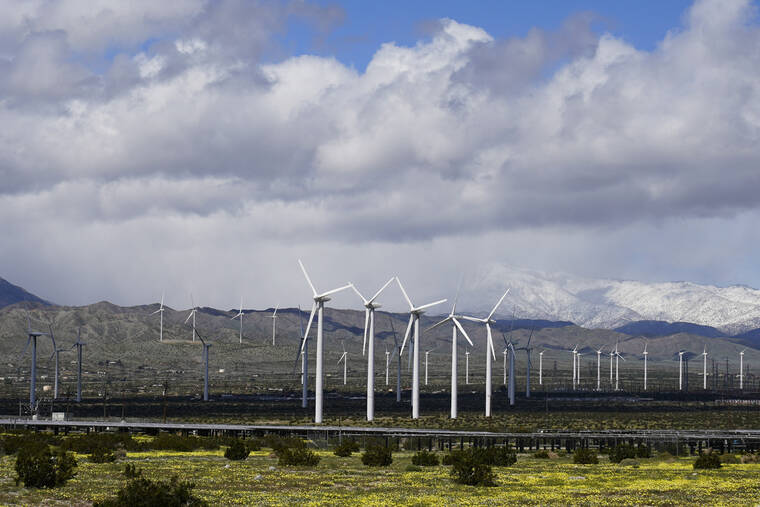U.S. renewable electricity surpassed coal in 2022
Electricity generated from renewables surpassed coal in the United States for the first time in 2022, the U.S. Energy Information Administration announced Monday.
Renewables also surpassed nuclear generation in 2022 after first doing so last year.
Growth in wind and solar significantly drove the increase in renewable energy and contributed 14% of the electricity produced domestically in 2022.
“I’m happy to see we’ve crossed that threshold, but that is only a step in what has to be a very rapid and much cheaper journey,” said Stephen Porder, a professor of ecology and assistant provost for sustainability at Brown University.
California produced 26% of the national utility-scale solar electricity followed by Texas with 16% and North Carolina with 8%.
The most wind generation occurred in Texas, which accounted for 26% of the U.S. total followed by Iowa (10%) and Oklahoma (9%).
“This booming growth is driven largely by economics,” said Gregory Wetstone, president and CEO of the American Council on Renewable Energy. “Over the past decade, the levelized cost of wind energy declined by 70 percent, while the levelized cost of solar power has declined by an even more impressive 90 percent.”
“Renewable energy is now the most affordable source of new electricity in much of the country,” added Wetstone.
The Energy Information Administration projected that the wind share of the U.S. electricity generation mix will increase from 11% to 12% from 2022 to 2023 and that solar will grow from 4% to 5% during the period. The natural gas share is expected to remain at 39% from 2022 to 2023, and coal is projected to decline from 20% last year to 17% this year.
“Wind and solar are going to be the backbone of the growth in renewables, but whether or not they can provide 100% of the U.S. electricity without backup is something that engineers are debating,” said Brown University’s Porder.
Many decisions lie ahead, he said, as the proportion of renewables that supply the energy grid increases.
This presents challenges for engineers and policy-makers, Porder said, because existing energy grids were built to deliver power from a consistent source. Renewables such as solar and wind generate power intermittently. So battery storage, long-distance transmission and other steps will be needed to help address these challenges, he said.
The EIA report found the country remains heavily reliant on the burning of climate-changing fossil fuels. Coal-fired generation was 20% of the electric sector in 2022, a decline from 23% in 2021. Natural gas was the largest source of electricity in the U.S. in 2022, generating 39% last year compared to 37% in 2021.
“When you look at the data, natural gas has been a major driver for lowering greenhouse gas emissions from electricity because it’s been largely replacing coal-fired power plants,” said Melissa Lott, director of research for the Center on Global Energy Policy at Columbia University.
“Moving forward, you can’t have emissions continuing to go up, you need to bring them down quickly,” added Lott.
The Inflation Reduction Act (IRA) influenced the amount of renewable energy projects that went online in 2022, Lott said, and it’s expected to have a “tremendous” impact on accelerating clean energy projects. ———
Associated Press climate and environmental coverage receives support from several private foundations. See more about AP’s climate initiative here. The AP is solely responsible for all content.

